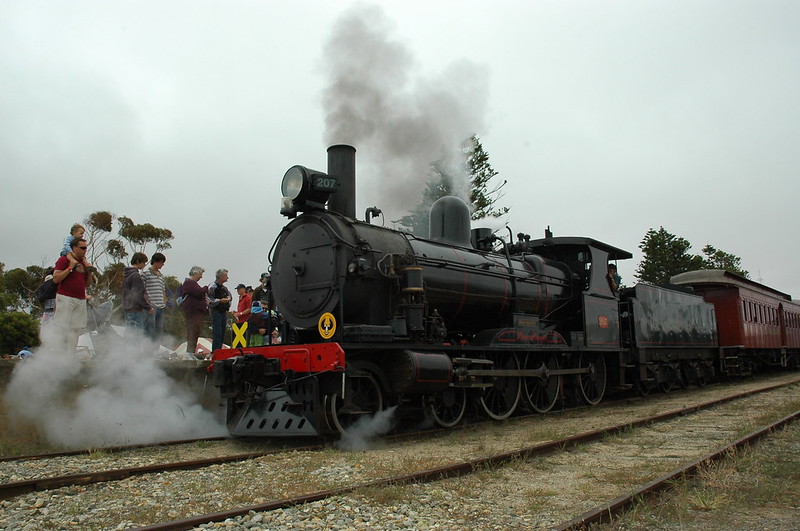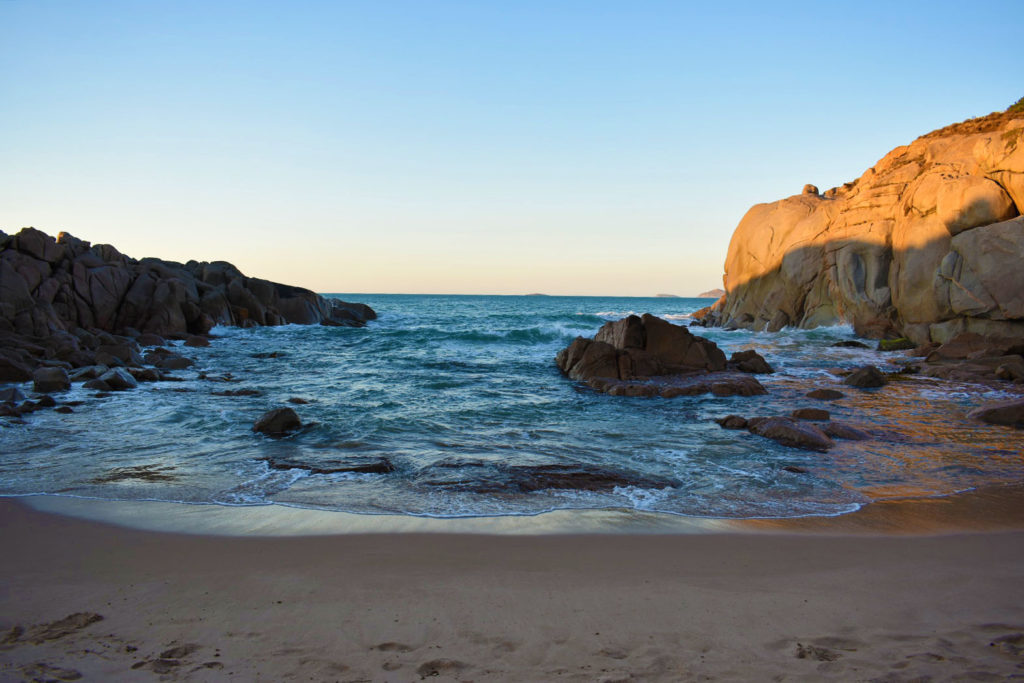Wales and the World: A Letter from Port Elliot, South Australia

Alan Williams
Today, the small township of Port Elliot has a population of around 2,700 during the week, a little more than Barmouth in Gwynedd, but considerably more on weekends and school holidays owing to the influx of day-trippers from Adelaide and tourists from interstate.
Perhaps the most popular local attraction is the family run Port Elliot bakery renowned for its pies, pasties and pastries.
Named the most popular bakery in South Australia in 2020, it is not unusual to see a 50m long queue at lunch times.
Other local attractions include the safe swimming beach at Horseshoe Bay, surfing at Boomer Beach and the Southern Fleurieu Historical Museum.
Silence shattered
Every Wednesday, Saturday and Sunday, and throughout the school holidays, the peace and quiet of Port Elliot is shattered by the unmistakeable sound of a steam whistle.
Far off to begin with but as the Steam Ranger gets ever closer to the small station at Port Elliot the whistle gets ever louder.

It never fails to rekindle memories of the pre-Beeching days when steam trains pulled into the small station at Trawscoed on the Aberystwyth – Carmarthen line.
Its whistle acted as my alarm clock until the good Doctor decided to swing his axe in 1964. Today, here in Port Elliot, this relic of the past is operated by volunteers solely for the benefit of the many tourists that flock to the Fleurieu Peninsula, south of Adelaide in South Australia.
Operating between the river port of Goolwa, some 12km to the east of Port Elliot and the town of Victor Harbor, 6km to the west.
By bullock
The genesis of the Port Elliot railway came during the middle 1800’s. Pioneering farmers in South Australia, Victoria and New South Wales were forced to rely on bullock drays for getting their produce to market.
The time taken to haul a load of wheat, wool or hides from northern Victoria or inland South Australia to the port of Melbourne or Adelaide, not to mention the vast amounts of fodder and water required for the journey, was almost prohibitive.
The return journey from northern Victoria to the port of Melbourne, for example, took about a month.
In 1830, the Australian explorer Captain Charles Sturt, discovered the mighty Murray River.
Having shown that it was possible to navigate downstream to the river port of Goolwa, thus introducing an alternative to transporting produce by bullock drays, it wasn’t long before river navigation became the main form of transport of farm produce to the coast and the transport of supplies back upriver to the farming communities in ‘the bush’.
Dangerous
However, there was another problem to be overcome. Despite the huge size of the slow-flowing Murray, its journey as good as ends in Lake Alexandrina, a huge, shallow body of water, almost the size of the Isle of Anglesey in surface area.
As the lake is subject to high rates of evaporation for much of the year, its outflow to Encounter Bay is relatively small resulting in a shallow and dangerous river mouth.
Early attempts to navigate the river mouth were nearly always met with disaster and many lives were lost in trying. The idea of establishing a seaport at Goolwa was therefore quickly abandoned.

Having been transported downriver to Goolwa by a growing fleet of paddle steamers, there was still a need to deliver the goods to a seaport.
In South Australia the closest port to Goolwa was Port Adelaide, some 100km, or another week by road for a bullock team.
In 1849 a Commission of Inquiry had already determined that Horseshoe Bay, a small bay in the small settlement of Port Elliot, and only 12km from Goolwa, would make a suitable port for small costal ships. (Horseshoe Bay is about a third of the size of the bay at New Quay).
In 1851, the construction of a single-track railway was commenced, being the quicker and cheaper alternative to building a canal.
Work commenced on the railway immediately and was completed in 1853 establishing Port Elliot as an important seaport on the south coast of South Australia.
The Goolwa-Port Elliot railway became the first iron railroad to be constructed in Australia.

Although stationary steam engines were being used to power the paddle steamers plying the river Murray, steam locomotives were still some way off.
Consequently, the rail wagons used to transport the farm produce from Goolwa to Port Elliot were hauled by horses.
Large storage sheds were built at each end of the railway to store the produce while awaiting onward transportation by ship.
The sacks of grain and bales of wool and hides were loaded on to small coastal vessels for transfer to the Port of Adelaide for onward shipping to overseas ports.
Foolhardy
Unfortunately, the development of the port on Horseshoe Bay at Port Elliot was soon to be seen as a foolhardy venture.
Strong south-west swells entering the small bay soon proved to be a serious problem for the small ships. In 1853 the schooner Emu became the first vessel to founder with the loss of all four crew. A breakwater was quickly erected across part of the entrance to the bay.
However, in 1855, after a storm dislodged some of the huge rocks used to build it, the project was abandoned.
In 1856 four more vessels were wrecked. These losses were to see the beginning of the end of Port Elliot as a seaport which had quickly gained the reputation of being a “ship trap”.
Between 1851 and 1864, no less than seven vessels foundered in Horseshoe Bay.
In 1861, the decision to develop Port Victor, later to be named Victor Harbor, (the official spelling), as an alternative seaport was put into action.
The railway was extended a further 6km along the coast from Port Elliot and a breakwater and jetty to accommodate sea-going vessels was built in the lee of Granite Island.
The jetty was completed in 1864 with the railway extension opening in August of that year. In 1866 the port at Port Elliot was declared no longer a seaport.
Houseboat mecca
The development of the railways in Victoria and South Australia during the latter half of the 1800’s quickly brought an end to the paddle steamer trade on the Murray River.
Today the river is a mecca for houseboat enthusiasts. It is impossible to determine the number of houseboats along the 2000km of navigable water but there must be hundreds, ranging from 2 to 14-berth luxury floating homes to the mighty Murray Princess paddle-wheeler catering for 120 passengers.
The main, shopping street of Port Elliot often reminds me of the main street of Dyffryn Ardudwy, in Gwynedd, where I spent my primary school years in the care of Miss Thomas, Miss Owen, Mrs Davies, Miss Griffiths and two headmasters, both named Jones.
Having ‘migrated’ from England at the age of 4, and being plunged into what was then a totally Welsh speaking environment, learning Welsh was not at all difficult.
I’m proud to say that I still speak Welsh whenever the opportunity arises, despite my 55 years ‘downunder’.
Support our Nation today
For the price of a cup of coffee a month you can help us create an independent, not-for-profit, national news service for the people of Wales, by the people of Wales.





See Australians from Wales…Lewis Lloyd…
Our best bakery is in Blaenau Ffestiniog…
You may remember the phrase ‘Suffering in Dyffryn’ re. Darts…
Funny to hear Barmouth used as a comparative…
24 hr shopping available in Dyffryn too, back in the day…